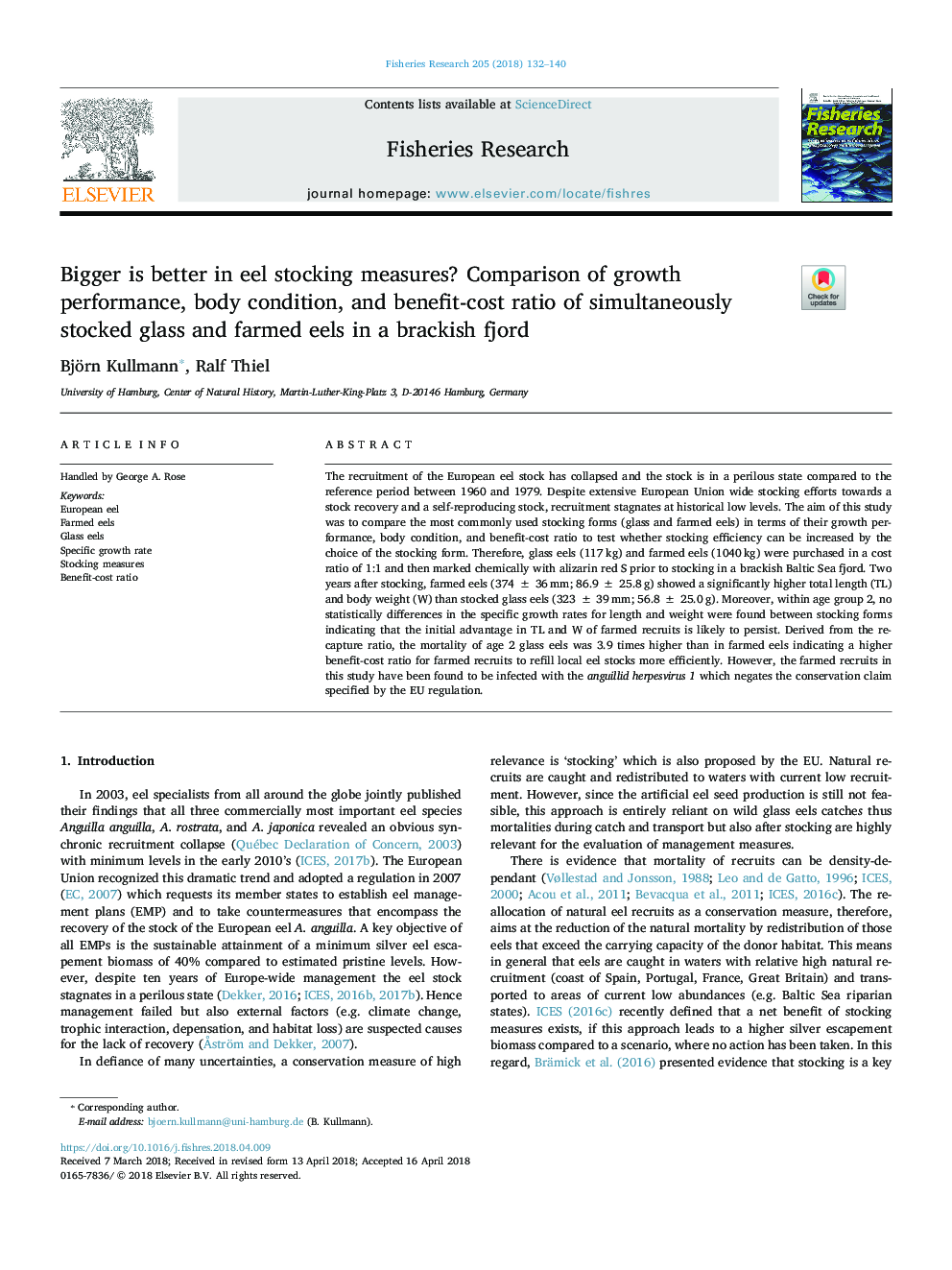| کد مقاله | کد نشریه | سال انتشار | مقاله انگلیسی | نسخه تمام متن |
|---|---|---|---|---|
| 8885334 | 1626765 | 2018 | 9 صفحه PDF | دانلود رایگان |
عنوان انگلیسی مقاله ISI
Bigger is better in eel stocking measures? Comparison of growth performance, body condition, and benefit-cost ratio of simultaneously stocked glass and farmed eels in a brackish fjord
ترجمه فارسی عنوان
بزرگتر در اقدامات جوراب زنانه ساقه بلند بهتر است؟ مقایسه عملکرد رشد، وضعیت بدن و نسبت سود و هزینه در مقایسه با سایر گیاهان زراعی و گیاهان دارویی در یک فیور
دانلود مقاله + سفارش ترجمه
دانلود مقاله ISI انگلیسی
رایگان برای ایرانیان
کلمات کلیدی
قورباغه اروپا خرگوش های مزرعه گیاهان زینتی نرخ رشد ویژه، اقدامات جوراب زدن، نسبت هزینه سود،
موضوعات مرتبط
علوم زیستی و بیوفناوری
علوم کشاورزی و بیولوژیک
علوم آبزیان
چکیده انگلیسی
The recruitment of the European eel stock has collapsed and the stock is in a perilous state compared to the reference period between 1960 and 1979. Despite extensive European Union wide stocking efforts towards a stock recovery and a self-reproducing stock, recruitment stagnates at historical low levels. The aim of this study was to compare the most commonly used stocking forms (glass and farmed eels) in terms of their growth performance, body condition, and benefit-cost ratio to test whether stocking efficiency can be increased by the choice of the stocking form. Therefore, glass eels (117â¯kg) and farmed eels (1040â¯kg) were purchased in a cost ratio of 1:1 and then marked chemically with alizarin red S prior to stocking in a brackish Baltic Sea fjord. Two years after stocking, farmed eels (374â¯Â±â¯36â¯mm; 86.9â¯Â±â¯25.8â¯g) showed a significantly higher total length (TL) and body weight (W) than stocked glass eels (323â¯Â±â¯39â¯mm; 56.8â¯Â±â¯25.0â¯g). Moreover, within age group 2, no statistically differences in the specific growth rates for length and weight were found between stocking forms indicating that the initial advantage in TL and W of farmed recruits is likely to persist. Derived from the recapture ratio, the mortality of age 2 glass eels was 3.9 times higher than in farmed eels indicating a higher benefit-cost ratio for farmed recruits to refill local eel stocks more efficiently. However, the farmed recruits in this study have been found to be infected with the anguillid herpesvirus 1 which negates the conservation claim specified by the EU regulation.
ناشر
Database: Elsevier - ScienceDirect (ساینس دایرکت)
Journal: Fisheries Research - Volume 205, September 2018, Pages 132-140
Journal: Fisheries Research - Volume 205, September 2018, Pages 132-140
نویسندگان
Björn Kullmann, Ralf Thiel,
